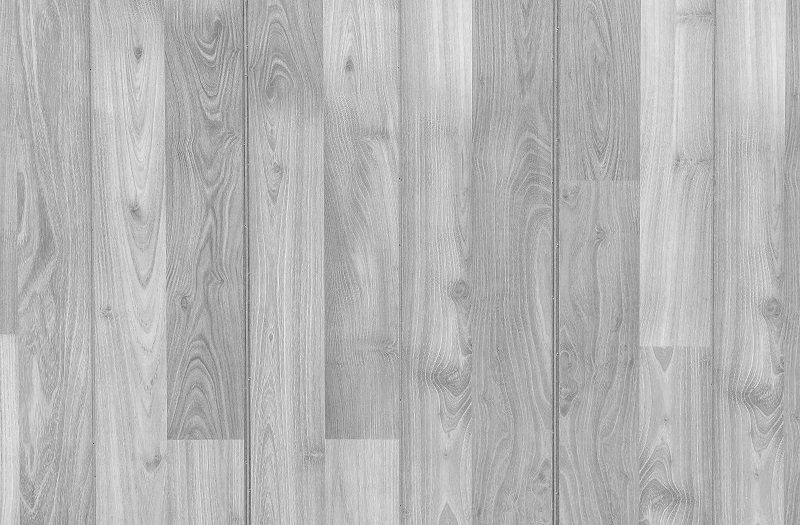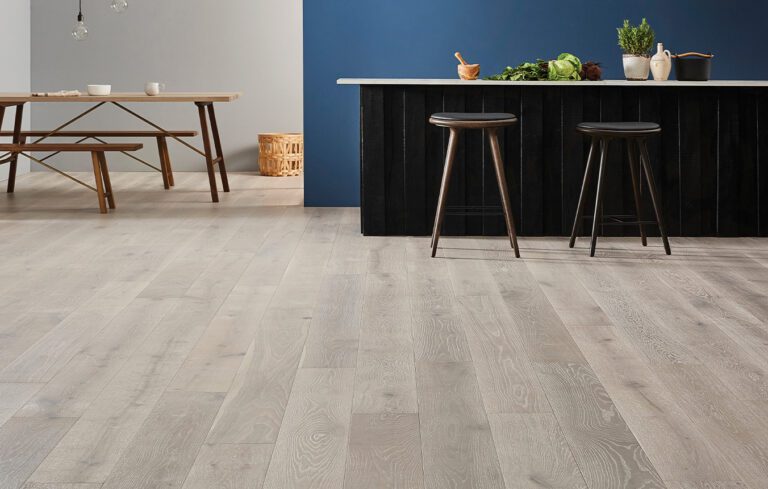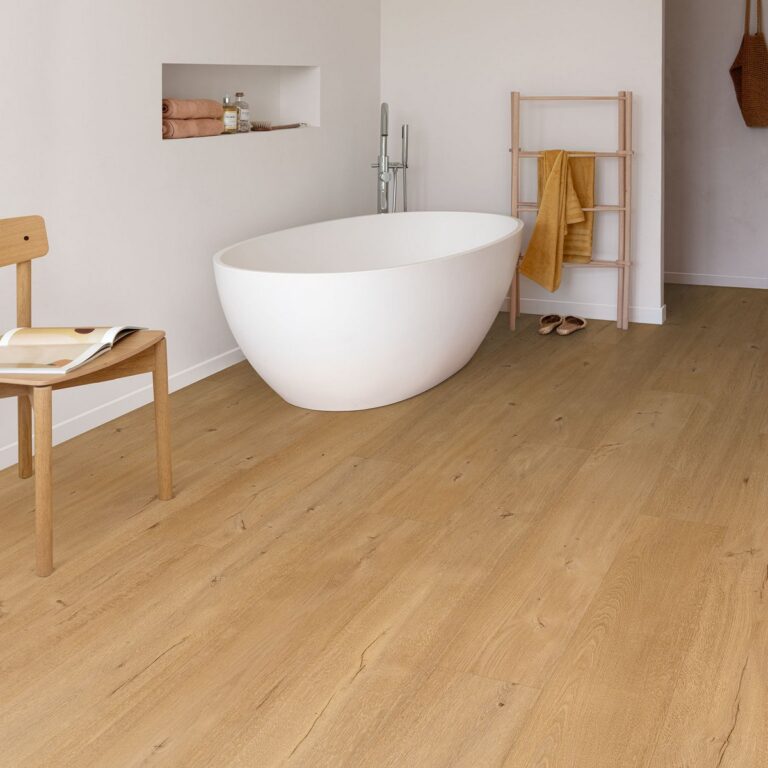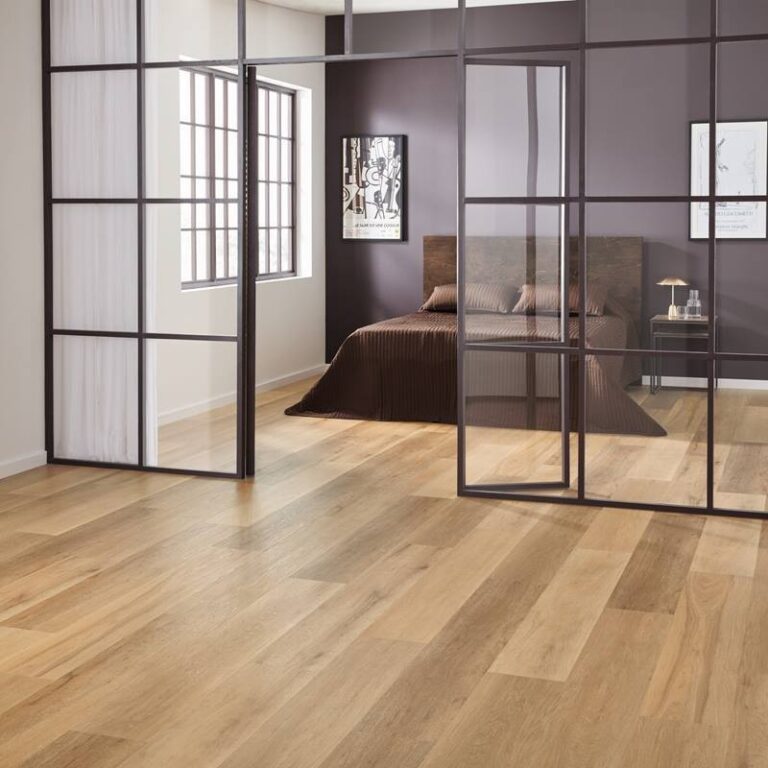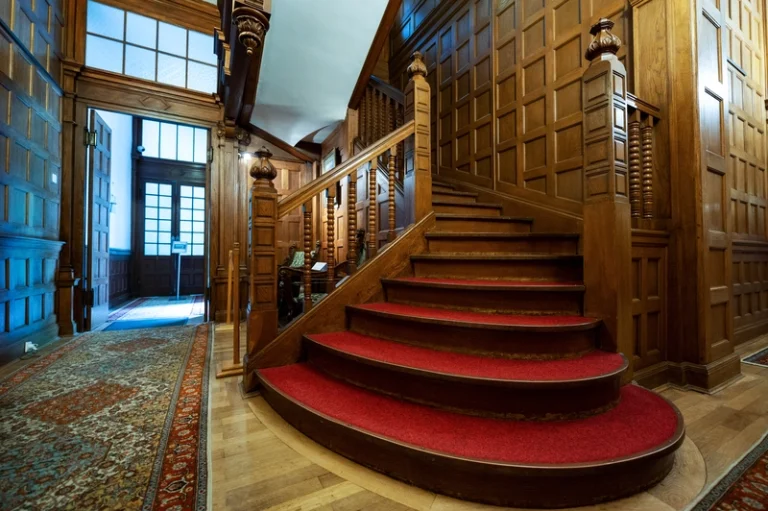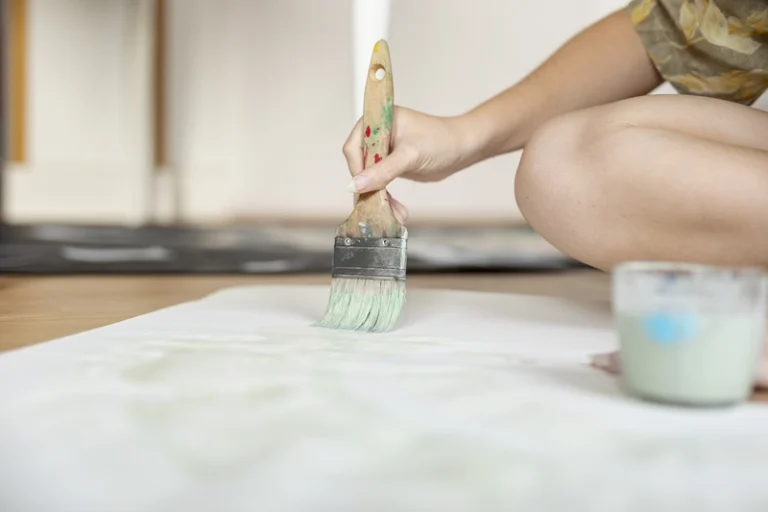Looking to install cushion vinyl flooring but unsure about the right thickness? We explore the standard thickness of cushion vinyl flooring and recommend options for different areas. We also discuss the factors that affect the thickness of cushion vinyl flooring, as well as the benefits and drawbacks of thicker options.
Learn how to choose the right thickness for your cushion vinyl flooring based on your needs and budget.
What Is the Thickness of Cushion Vinyl Flooring?
The thickness of cushion vinyl flooring plays a crucial role in its durability and comfort. It is a key factor to consider when selecting the right flooring for your space.
Thicker cushion vinyl flooring offers enhanced durability as it can withstand heavy foot traffic and daily wear and tear more effectively than thinner options. The added thickness provides better cushioning underfoot, making it more comfortable to walk on and reducing strain on joints over time. A thicker vinyl layer often contributes to better sound insulation, absorbing noise and creating a quieter indoor environment.
The Standard Thickness of Cushion Vinyl Flooring
How thick is cushion vinyl flooring? Standard thickness for cushion vinyl flooring typically ranges from 2 to 4 millimetres, ensuring a balance between durability and flexibility for various applications.
This variation in thickness allows cushion vinyl flooring to cater to different usage requirements in residential, commercial, and industrial settings. Thinner ranges, around 2 millimetres, are often preferred for areas with less foot traffic such as residential bedrooms or study rooms, providing a comfortable cushioning underfoot.
On the other hand, cushioned vinyl flooring sheet thickness of 4-millimetre is commonly used in high-traffic areas like kitchens, hallways, and commercial spaces, offering enhanced durability and wear resistance. The thickness also plays a crucial role in noise reduction, moisture protection, and thermal insulation, making it a versatile choice for diverse environments.
Recommended Thickness of Cushion Vinyl Flooring for Different Areas
The recommended thickness of cushion vinyl flooring varies based on the area of installation. For high foot traffic areas, a thicker flooring option is usually advised to ensure longevity and performance.
For instance, in commercial spaces such as retail stores, airports, and educational institutions where traffic flow is intense, choosing a thicker vinyl with a wear layer of 20 mil or more is crucial to withstand the constant wear and tear.
On the other hand, in residential areas like bedrooms or dining rooms, a thinner vinyl with a wear layer of around 8-12 mil may suffice, providing comfort and durability without the need for excessive thickness.
Factors that Affect the Thickness of Cushion Vinyl Flooring
How thick is cushion flooring? Basically, there are several factors that influence the thickness of cushion vinyl flooring, including the wear layer, subfloor condition, and advancements in vinyl technology that impact the overall construction.
Wear layers play a critical role in determining how well the vinyl flooring can withstand daily wear and tear, such as scratches, scuffs, and stains, thereby directly affecting its thickness. A high-quality wear layer adds durability and longevity to the flooring. Subfloor conditions, whether it’s concrete, wood, or existing flooring, can influence the necessary thickness of the cushion vinyl to ensure proper installation and performance.
Technological advancements in the vinyl industry have led to innovations like enhanced core materials and installation methods, allowing for thinner yet more resilient vinyl options. These developments have enabled manufacturers to produce thinner cushion vinyl flooring without compromising on durability and performance.
a. Material Composition
The material composition of cushion vinyl flooring directly affects its thickness, with options ranging from vinyl planks to vinyl sheets, each offering unique characteristics and benefits.
In terms of vinyl planks, they are typically constructed with multiple layers, including a wear layer, printed design layer, core layer, and backing layer. This layered structure not only adds to the durability of the planks but also provides a realistic wood-like appearance.
On the other hand, vinyl sheets are usually homogeneous in composition, offering a more seamless and smooth surface. Their single-layer construction makes them easier to install in large spaces, minimising seams and creating a uniform look.
While vinyl planks are ideal for residential areas due to their design versatility and durability, vinyl sheets are commonly used in commercial settings where hygiene and maintenance are top priorities.
b. Wear Layer Thickness
The thickness of the wear layer in cushion vinyl flooring is a critical component that determines the floor’s durability and resistance to scratches, stains, and wear over time.
Having a thicker wear layer adds an extra shield of protection to the vinyl flooring, ensuring it can withstand heavy foot traffic and daily use without showing signs of wear and tear easily. Quality wear layers are often made from durable materials like urethane or aluminium oxide, enhancing the floor’s longevity and preventing damage from direct impacts or spills. This sturdy barrier also acts as a barrier against UV rays, preventing discolouration and maintaining the floor’s aesthetic appeal over time.
c. Subfloor Condition
The condition of the subfloor impacts the choice of thickness for cushion vinyl flooring, especially when installing over concrete subfloors that require proper preparation for optimal performance.
A properly prepared subfloor is crucial in ensuring the longevity and quality of your vinyl flooring. Concrete subfloors, in particular, need careful attention to detail to avoid any issues such as moisture seepage or uneven surfaces. Inadequate subfloor preparation can lead to problems like lumps, bumps, and premature wear and tear of the vinyl. Therefore, it is essential to assess the condition of the subfloor before installation and address any imperfections or irregularities that may affect the performance of the flooring.
Benefits of Thicker Cushion Vinyl Flooring
Opting for thicker cushion vinyl flooring offers advantages such as increased durability, enhanced comfort, and better sound insulation, making it a popular choice for various settings.
Thicker cushion vinyl flooring is designed to withstand heavy foot traffic, making it a durable solution for high-traffic areas like hallways, kitchens, and living rooms. The additional thickness adds a layer of cushioning that not only enhances comfort underfoot but also provides support when standing for extended periods. Its sound insulation properties help reduce noise transmission, creating a quieter environment in your home or commercial space.
a. Increased Durability
Thicker cushion vinyl flooring enhances durability, making it more resistant to wear and tear, thus extending the lifespan of the flooring in both residential and commercial environments.
When thinking about the thickness of cushion vinyl flooring, it is crucial to understand how this characteristic plays a pivotal role in its overall durability. The increased thickness not only adds an extra layer of protection but also fortifies the flooring against daily impacts and foot traffic.
This robust construction ensures that the flooring can withstand the challenges of high-traffic areas, such as kitchens, hallways, and commercial spaces, where durability is paramount. The thicker cushion also offers enhanced comfort underfoot, making it ideal for areas where people stand for extended periods.
b. Better Sound Insulation
Thicker cushion vinyl flooring provides better sound insulation, reducing noise transmission between floors and creating a quieter and more comfortable indoor environment.
One of the key factors that contribute to the superior sound insulation properties of thicker cushion vinyl flooring is its density. The increased thickness of the cushion layer acts as a barrier, absorbing impact noise and minimising vibrations that could otherwise travel through the floor structure. Enhancing acoustic comfort, this construction effectively reduces the transfer of sound waves, particularly footfall noise, resulting in a more tranquil living or working space.
c. Enhanced Comfort
Thicker cushion vinyl flooring offers enhanced comfort underfoot, providing a softer feel and cushioning effect that adds a touch of luxury to any space.
When you step onto a floor adorned with this luxurious vinyl surface, you are greeted by a plush sensation that pampers your feet. The thickness of the vinyl not only creates a cosy atmosphere but also absorbs impact, reducing strain on your joints and muscles. This combination of luxury vinyl planks and comfort standards elevates the overall feel of a room, turning it into a sanctuary of relaxation and tranquillity. The superior cushioning properties of this flooring make it ideal for areas where you spend extended periods standing or walking.
Drawbacks of Thicker Cushion Vinyl Flooring
Whilst thicker cushion vinyl flooring offers numerous benefits, it also comes with drawbacks such as higher cost and challenges related to installation, requiring careful consideration before making a decision.
One of the primary drawbacks of opting for thicker cushion vinyl flooring is the cost implication. The thicker the vinyl, the more expensive it tends to be compared to thinner options. This can significantly impact your overall budget for flooring renovation projects. The installation process for thicker cushion vinyl flooring can be more labour-intensive and complex. The added thickness can make it challenging to cut and fit properly, requiring skilled professionals to ensure a seamless and durable installation.
a. Higher Cost
Thicker cushion vinyl flooring generally comes at a higher cost compared to thinner options, making it essential to recognise the upfront investment against the long-term benefits and durability.
When considering the pricing of thicker cushion vinyl flooring, it’s important to recognise the value proposition it offers. While the initial cost may be higher, thicker cushion vinyl tends to be more resilient and long-lasting, which can result in significant savings over time. This durability translates to fewer replacement or repair expenses in the future, making it a cost-effective choice in the long run. The enhanced comfort and insulation provided by thicker cushion vinyl flooring add to its overall value, creating a cosy and inviting atmosphere in any space.
b. Difficult Installation
Installing thicker cushion vinyl flooring can be challenging due to its increased weight and thickness, requiring meticulous planning and professional expertise to ensure a successful installation.
The weight of thicker cushion vinyl flooring can pose difficulties during transportation and handling, often necessitating extra manpower or specialised equipment. The increased thickness adds another layer of complexity, impacting the subfloor preparation and potentially requiring adjustments to door clearances and trim installations. Adhering to manufacturer’s guidelines is crucial, as improper installation can lead to issues such as buckling, uneven surfaces, or premature wear.
Professionals recommend thorough inspections of the subfloor for moisture and smoothness before beginning the installation process. Properly acclimatising the flooring material to the environment is also essential to prevent future problems. The challenges of installing thicker cushion vinyl flooring underscore the importance of careful planning and skilled execution.
Tips to Choose the Right Thickness for Your Cushion Vinyl Flooring
How thick is cushioned vinyl flooring that fits your home? Selecting the appropriate thickness for your cushion vinyl flooring involves considering factors such as the area of installation, budget constraints, and the material’s wear layer protection to ensure optimal performance and longevity.
In terms of choosing the right thickness for your cushion vinyl flooring, the area where the flooring will be installed plays a crucial role. High-traffic areas like hallways or living rooms may benefit from thicker vinyl to withstand heavy usage, while bedrooms or less frequently used spaces could work well with a thinner option.
Budget is another important aspect to keep in mind; thicker vinyl tends to come at a higher cost, so aligning your budget with your desired thickness is key. The wear layer protection, which determines the flooring’s durability, should be chosen based on the level of foot traffic the area receives. Considering these factors will help you make an informed decision that fits your needs and preferences.
a. Consider the Area of Installation
When selecting the thickness for cushion vinyl flooring, it is essential to consider the specific area of installation, as different spaces may have varying requirements based on usage and foot traffic.
Understanding the dynamics of the space is crucial as it directly impacts the durability and comfort of the flooring. For high-traffic areas like hallways or kitchens, opting for a thicker cushion vinyl can provide better wear resistance and lasting performance.
On the other hand, areas with less foot traffic such as bedrooms might benefit from a slightly thinner option while still maintaining the desired comfort level.
b. Evaluate Your Budget
Budget considerations play a significant role in selecting the right thickness for cushion vinyl flooring, as thicker options may entail higher costs that need to align with your financial constraints and long-term investment goals.
It is crucial to remember that the thickness of cushion vinyl flooring directly affects not only its durability and comfort but also the overall cost of the project. By evaluating your budget carefully, you can strike a balance between upfront expenses and long-term savings, ensuring that you get the best value for your investment. Considering the lifespan and wear resistance of different thickness options is essential in making an informed decision that aligns with your financial strategy.
c. Check the Material and Wear Layer Thickness
Assessing the material composition and wear layer thickness is essential when selecting the right thickness for cushion vinyl flooring, as these factors directly impact the floor’s performance and longevity.
Material composition plays a crucial role in determining the overall quality and resilience of the flooring. Different materials offer varying levels of durability and resistance to wear and tear.
The wear layer thickness acts as a protective shield for the floor, guarding against scratches, stains, and daily foot traffic. Choosing the appropriate wear layer thickness ensures that the floor maintains its aesthetic appeal and structural integrity over time.
Want to get good quality cushion vinyl flooring? Come to our Teka Flooring store at Peterborough, UK. Our cushion vinyl flooring is made with a high-quality, durable material that is perfect for both residential and commercial applications.
It is also available in a variety of styles and colours to suit any taste or décor, the brown one like Amor Minho or the good grey like Amor Porto. To get the best results, you can use our professional stress-free carpet fitting and flooring installation services. Call us today on 01733 731 930!
Read Also:







